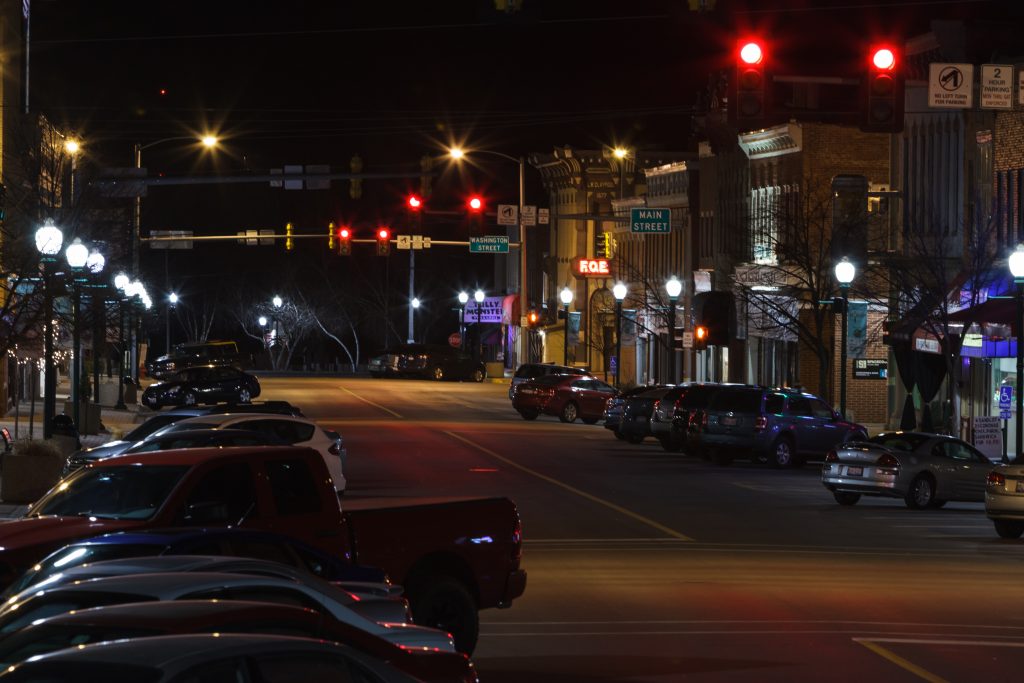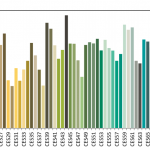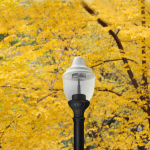The Blueprint for Tomorrow’s Cities

Smart cities, intelligent cities, connected communities. No matter what you call them, cities and towns paired with information and communication technology built into the infrastructure are the future for communities all over the world.
“Smart city” and the myriad of similar names are all loose terms for a city or community that uses sensor data to deliver a responsive infrastructure. In a smart city, sensors can monitor everything from energy usage to traffic flow to occupancy. Using wireless connectivity, cities can control and adjust their infrastructure in real-time based on changing needs of the community.
Data collection methods can include sensors for energy and water usage, occupancy and crowd size measurement, facial recognition, environmental conditions, traffic flow and public transportation use.
The promise of smart cities is better managed infrastructure and services for communities through technologies such as Internet of Things (IoT), artificial intelligence and big data. The challenge is that the infrastructure in many cities is decades old, which holds the cities back.
Leading investors see the promise of the smart city
Some of the world’s wealthiest investors see the potential of smart cities and are partnering around the globe to create smart communities:
- A Google company is investing $50 million into a project to revitalize an industrial neighborhood in Toronto, Canada—something Google is describing as the “world’s first neighborhood built from the internet up.” When complete, the neighborhood will feature a “digital layer” that will monitor everything from inefficient electricity use to foot traffic.
- Bill Gates, through an investment company he controls, has put $80 million in Belmont, Arizona—a proposed smart city near Phoenix. A greenfield parcel of 24,800 acres, the city is planned to rival Paris in size once completed. As many as 80,000 homes may ultimately be built in Belmont.
- Saudi Arabia has committed $500 million to a new planned smart megacity—NEOM—which would span 10,230 square miles, which is 33 times the size of New York City.
The Smart City Blueprint
The hallmark of a smart city is its connectivity. Networks of sensors connecting to each other and to central decision-making hubs (e.g. town hall) provide the information needed to optimize the city experience for its communities.
Around the world, cities are implementing a variety of technologies to improve their communities, save money and invest in their futures. Common examples include:
Lighting Management
Chicago recently launched its Smart Lighting Program with plans to replace 270,000 street lights by 2021 with smart LEDs. The new lights will be connected, alerting the city when lights go out or need service—addressing one of the top reasons residents call the non-emergency city services line.
The British city of Manchester added motion sensors to dim the lights in unused areas for energy savings while raising the light levels in busy areas for safety. In Denmark, city officials took this idea further by combining energy efficiency with bicycle safety. The city of Copenhagen added sensors to the streetlights to detect cyclists and turn up the lights when cyclists pass down the streets.
Measurement
Using sensors to count people, bicycles and motor vehicles and their flow through certain areas are common kinds of data collection. Cities as diverse as Vancouver, Canada and the Georgetown area of Washington, D.C., use networks of sensors to count pedestrians and vehicles. The data from these sensors guide future infrastructure investments and provide useful “before-and-after” measurements to gauge the effectiveness of projects.
Cameras
Cameras are another common smart city application. Some cities install cameras for security purposes—as has been done throughout the U.K., but some places use the cameras for optimization purposes. For example, Moscow has more than 150,000 cameras installed throughout the city to monitor traffic, as well as city services like trash removal and street cleaning.
Public Wi-Fi
With the proliferation of mobile devices, connectivity needs have exploded. San Jose, California took the step of installing Wi-Fi access points throughout the city, leveraging lampposts as the mounting platform.
Air quality monitoring
Chicago rolled out a network of sensors on lampposts to track airborne pollutants. Called the “Array of Things,” the data from these sensors can predict air quality incidents in the city and help protect residents.
Many of the world’s leading investors and technology companies see smart cities as the path of the future for today’s communities. With modern lighting solutions from Amerlux, you can leverage your existing infrastructure like you never have before.

